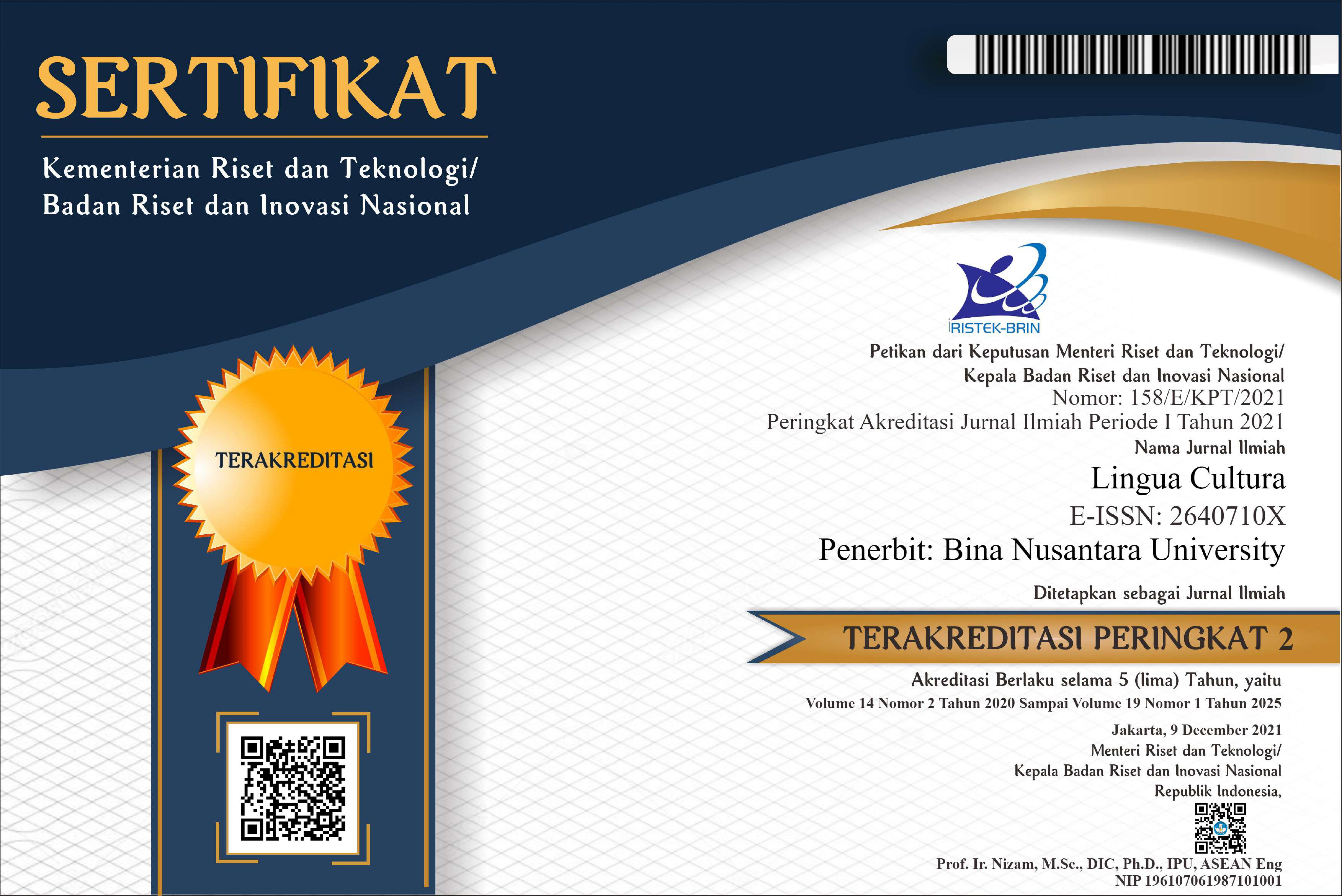Monkey Dance Transformation And Displacement: From Traditional Performance To Urban Everydayness
DOI:
https://doi.org/10.21512/lc.v6i1.390Keywords:
monkey dance, transformation, displacement, everyday life, place, spaceAbstract
This research attempts to investigate how the monkey dance, a traditional mobile performance from village to village, transforms and displaces itself into a semi-permanent urban street performance as the effect of modernization and globalization. The research is closely relevant to the theme of the everyday life on the relation between art and the social. Doger monyet (monkey dance) performance has always been regarded as the marginal art/culture. Its place has always been among the mid-lower class of society, thus when it changes its mode and place of performance, questions and curiosity arises. This phenomenon requires a re-examination of the cultural transformation effect to everyday life. This research attempts to answer several issues regarding the phenomena: how the performance negotiates its way to the urban everyday life and its everydayness; how it manages to place itself within the urban space; how it deals with the authority and the urban dwellers, and what its future is going to be like in the new space.
Plum Analytics
References
Austin, Joe. Taking the Train. New York: Columbia UP, 2001. Print.
Blue Sky. “Bandung Pasupati Flyover: 2.5 Km with 300 Meter Cable Stayed Bridge”. Skyscrapercity forums. Issue 12 Spring 12. 28 September 2005. Web. 25 January 2010. <http://www.skyscrapercity.com/showthread.php?t=228637>.
Blue Sky. “Bandung Pasupati Flyover: 2.5 Km with 300 Meter Cable Stayed Bridge
Cohen-Cruz, Jan. (ed.). Radical Street Performance: An International Anthology. London: Routledge, 1998. Print.
Colombijn, Freek et.al. (eds.). Kota Lama Kota Baru: Sejarah Kota-kota di Indonesia. Jogjakarta: Penerbit Ombak, 2005. Print.
D. Dienaputra, Reiza. “Bandung 1906-1970: Studi Tentang Perkembangan Ekonomi Kota”. Kota Lama Kota Baru: Sejarah Kota-kota di Indonesia. Freek Colombijn, et.al. (eds.). Jogjakarta: Penerbit Ombak, 2005. 188-210. Print.
De Certeau, Michel. The Practice of Everyday Life. Steven F. Rendall (transl.). Berkeley: UC Press, 1984. Print.
D.S. Katong. “Jembatan Pasupati Bandung”. Flickr Yahoo. 29 October 2008. Web. 27 February 2010. .
Gottdiener, M. and Leslie Budd. Key Concepts in Urban Studies. London: Sage Publications, 2005. Print.
Hamper, Ben. Rivethead: Tales from the Assembly Line. Warner Books: New York, 1991. Print.
Highmore, Ben. Everyday Life and Cultural Theory: An Introduction. London: Routledge, 2002. Print.
Highmore, Ben (ed.). The Everyday Life Reader. London: Routledge, 2002. Print.
Katam, Sudarsono and Lulus Abadi. Album Bandoeng Tempo Doeloe. Bandung: Polar, 2006. Print.
Mason, Bim. Street Theatre and Other Outdoor Performance. London: Routledge, 1992. Print.
Rahardjo, Budi. “Doger Monyet”. Padepokan Budi Rahardjo. 31 May 2008. Web. 26 January 2010. <http://rahard.wordpress.com/2008/05/31/doger-monyet/>.
Rashid, Sharifah Norazizan Syed Abd., et.al. (eds.). Cities in the 21st Century: Urban Issues and Challenges. Selangor: UPM Press, 2002. Print.
Rifu. “bandung-jakarta…dengan sepeda lipat!!!” Apapun Lah. Wordpress.com. 31 January 2009. Web. 27 February 2010. .
Von Einsiedel, Nathaniel. Shelter, the Family, and the Environment. Urban Management Programme, Regional Office for Asia and the Pacific: Kuala Lumpur (?), 1994. Print.
Watson, Sophie. City Publics: The (Dis)enchantments of Urban Encounters. Abingdon: Routledge, 2006. Print.
Weigert, Andrew J. Sociology of Everyday Life. New York: Longman Inc., 1981. Print.
Yamashita, Shinji and J.S. Eades. (eds.). Globalization in Southeast Asia: Local, National, and Transnational Perspectives. New York: Berghahn Books, 2003. Print.
Downloads
Published
Issue
Section
License
Authors who publish with this journal agree to the following terms:
a. Authors retain copyright and grant the journal right of first publication with the work simultaneously licensed under a Creative Commons Attribution License - Share Alike that allows others to share the work with an acknowledgment of the work's authorship and initial publication in this journal.
b. Authors are able to enter into separate, additional contractual arrangements for the non-exclusive distribution of the journal's published version of the work (e.g., post it to an institutional repository or publish it in a book), with an acknowledgment of its initial publication in this journal.
c. Authors are permitted and encouraged to post their work online (e.g., in institutional repositories or on their website) prior to and during the submission process, as it can lead to productive exchanges, as well as earlier and greater citation of published work.
USER RIGHTS
All articles published Open Access will be immediately and permanently free for everyone to read and download. We are continuously working with our author communities to select the best choice of license options, currently being defined for this journal as follows: Creative Commons Attribution-Share Alike (CC BY-SA)

















